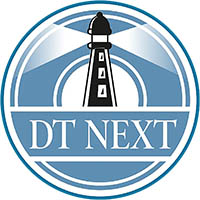5.3 million bus riders per day by 2032: Chennai MTC's business plan
The State-owned MTC has released a 10-year long-term vision and a five-year business plan, which was approved by the State government in July 2023, for guiding the transformation of the bus service.

MTC bus
CHENNAI: In a move to strengthen public transportation, Metropolitan Transport Corporation (MTC) has devised a long-term vision and a medium-term business plan to almost double its ridership by doubling its bus fleet by 2032.
As part of the World Bank’s Chennai City Partnership (CCP) programme, the State-owned MTC has released a 10-year long-term vision and a five-year business plan, which was approved by the State government in July 2023, for guiding the transformation of the bus service.
Under the vision, the average daily ridership seeks to increase from 2.8 mn in 2023 to 5.3 mn by 2032, with an increase in fleet size to 7,578 from 3,450 buses in 2023.
The World Bank’s report on Chennai’s Urban Mobility Transformation said that MTC’s fleet has declined steadily from 3,980 buses in 2016, and is currently at the same level as it was in 2011. Even among the operational fleet, around 47 pc of buses have passed their age of retirement but continued to operate due to a lack of funding for fleet renewal.
Over this period, the Chennai Metropolitan Area (CMA) has expanded to 5,900 sq km, and its population spiked from 12.2 mn in 2011 to about 15.9 mn in 2021. However, there are only 220 buses per million population in the fleet now – well below the national benchmark of 600 buses per million population for metropolitan cities. It’s also lower than the international practice of 1,000 buses per million population, as observed in cities like London and Bogota.
The report noted that inadequate public transport and increasing per capita incomes have led to rapid motorisation and a decline in public transport. The share of bus transport, especially, fell from 50 pc in 1980 to 22 pc in 2018. The use of personalised motorised vehicles rose sharply to 44 pc in 2018 with two-wheelers alone accounting for 30 pc of the mode share.
The report also noted that financial constraints were the main reason for the decline in bus services. The State-owned corporation witnessed a steady growth in in-house staff costs and fuel, which together constituted over 80 pc of its operation cost.
Under the CCP, a Public Transport Service Contract (PTSC) has been signed between the State government and MTC to formalise the commitment. “The PTSC ensures Viability Gap Funding for capital and operational expenses over five years, subject to MTC meeting its performance targets including regular reporting of performance, timely disbursement of funds, and an annual review of targets and the Business Plan,” the report said.
As part of the CCP, the MTC plans to procure 1,000 electric buses under the Gross Cost Contract bases. A contract was awarded to procure 500 low-floor electric buses and delivery is expected from April this year. It has floated bids to procure 600 electric buses in the second phase.
MTC wants to more than double its fleet to meet the ridership targets. “This will require replacing 2,343 existing buses as they reach their retirement age, and adding another 4,124 buses. So, MTC will need to procure 6,457 buses by 2031-2032 and plan for infrastructure and financial resources accordingly,” the report said.
MTC’s business plan includes a combination of service delivery models including in-house ownership and operations for existing buses, GCC-based operations for fleet expansion as already being adopted in several Indian and international cities and potential net cost contract for on-demand premium services. “The GCC model will allow MTC to focus on service design and customer satisfaction while the fleet ownership, operations, and maintenance are taken up by contracted operators for service expansion. This will reduce delivery costs, as observed across India, which will improve MTC’s financial sustainability substantially,” the World Bank report said.
To allay the fears of the existing workforce, the business plan recognises the major contributions of the more than 8,200 drivers and several other supervisory staff currently employed by MTC. The plan retains sufficient in-house operations for using the existing crew. Some staff will be up-skilled to manage priorities like contract management and performance review of private operators in the new GCC paradigm.
CITU-affiliated Tamil Nadu State Transport Corporation Employees Federation general secretary K Arumuga Nainar said that the State government and the MTC have not made public the business plan and the GO related to the World Bank-funded project. “We’ve been demanding the State government to strengthen public transportation by procuring new buses and filling up the vacancies to cater to the growing demand of the passengers. But the government wants to privatise the bus services. We strongly oppose it,” he said.



